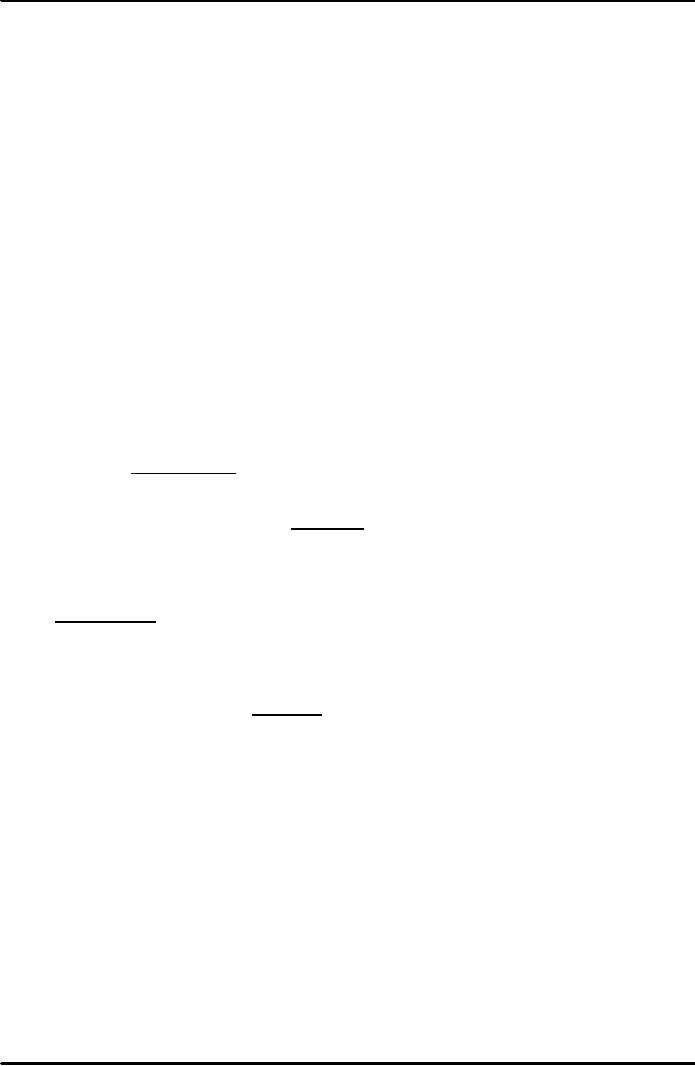 |

Introduction
To Public
AdministrationMGT111
VU
LESSON
35
TEAM
I
At the
end of the lecture students
will be able to
understand
�
Definition
of teams and types of
teams;
�
Informal
teams and their
functions;
�
Characteristics
of teams;
�
Stages
of team development and
Team
Teams
are defined as: two or
more people who interact with
and influence each other
toward
achievement
of common purpose. In more general
sense you might have
observed cricket teams,
hockey
teams
etc. But in the field of
administration/management a group of people that
manager supervises to
achieve
given goals is called a team or
group.
Types
of Teams
Traditionally,
there are two types of
teams in organizations: These
are formal and informal
teams.
In
the organizations of today, however,
teams exist that have the
characteristics of both formal
and informal
team.
That is the work relationships in teams
are both formal and
informal.
Formal
& Informal teams
Formal
teams or groups are created
deliberately by managers and are
assigned to carry out
specific
tasks
to help the organization achieve its
goals. These are also
called work teams. The
most common type of
formal
group is the command team. In this
team, there is a manager and
all employees who report to
that
manager.
Another
type of formal team is the committee. A
committee is formed to deal
with specific
and
recurrent
problem and to
provide solution to it. For
instance, your university or college
probably has a
committee
for student affairs to deal
with recurring issues of students.
The committees involve
students
also
to solve a problem.
A
quality circle is also a
kind of team. Problem Solving, quality
circle teams meet
for an hour
weekly
to
discuss work-related
problems,
investigate
the causes of problem, recommend
solutions,
and
take
corrective action. When a
team has completed its
investigation and identified a solution,
it makes
a
formal presentation to the management and
staff.
Some
formal teams are called
task forces or project
teams. These teams are
created to deal with
a
specific
problem and are usually
disbanded when the task is
completed or the problem is
solved.
It
may be mentioned that the concept of
team in organization is more prevalent in organization
of
developed
countries.
Informal
teams or groups emerge
whenever people come together and
interact regularly. Such
groups
develop within the formal organizational
structure. Members of informal
teams tend to subordinate
some
of their individual needs to
those of the team as a whole.
Functions
of Informal Groups
Informal
groups serve four major functions.
These are as follows:
1.
They
maintain and strengthen the norms
(expected
behavior) and values
their
members
hold
in common. In other words
members of team bind together
because they abide the
expectations
of each other.
2.
They
give members feelings of social
satisfaction, status, and
security. In large
organizations,
where many people feel that
their employers hardly know
them, informal
126

Introduction
To Public
AdministrationMGT111
VU
group
enable employees to share
jokes and complaints, eat
together, and socialize after
work.
3.
Informal
groups help their members
communicate. Members of informal
groups learn
about
matters that affect them by developing
their own informal channels
of
communication
and information to supplement
formal channels.
4.
Informal
groups help solve problems.
They might aid a sick or
tired employee or
devise
activities
to deal with boredom. Quite
often, such groups help
organization: when co-
workers
tell nonproductive employees to
"improve." But these groups
can also reduce an
organization's
effectiveness, by pressurizing colleague
`not to work'.
High
Performance Teams
There
are other types of teams
which are high performance
teams and these have
characteristics of
both
formal and informal teams.
These are group of 3 to 30
workers drawn from different
areas of an
organization.
These are also called
"self-managed work teams,"
"cross-functional teams," or
"high-
performance
teams". In these teams
members are taken from
all the departments of organization.
The
members
of this team are well trained
and they know their roles
and responsibility very well. These
teams
do
not require much guidance
and supervision.
Self-managed
Teams
Super-teams
that manage themselves
without any formal
supervision of a manager are
called self-
managed
teams. These teams usually
have the following
characteristics:
-
The
team has responsibility for a
"relatively whole task."
-
Each
Team members possess a variety of
task-related skills.
-
The
team has the power to determine
such things as work methods,
scheduling, and
assignment
of members to different
tasks.
-
The
performance of the group as a whole is
the basis for compensation
and feedback.
Characteristics
of Teams
The
first step in learning to manage
teams effectively is to become
aware of their
characteristics-
that
is, the way they develop leadership
roles, norms, and
cohesiveness.
Leadership
Roles
The
formal leader of a team is
usually appointed or elected.
Informal leaders, on the other
hand,
tend
to emerge gradually as group
members interact. The man or
women who speaks up more
than the
others,
offers more and better suggestions, or
who gives direction to the group's
activities usually becomes
the
informal leader
Stages
of Team Development
It
is also important to know the
stags of team developed. Small
groups move through five
stages as
they
develop;
1.
Forming;
2.
Storming;
3.
Forming;
4.
Performing;
5.
Adjourning
1.
Forming
This
is state when group members
meet. This is the initial stage of
knowing each other. The
group
forms
and learns what sort of behavior is
acceptable to the group members as a
group. By exploring what
does
and does not work in
group situation, the group sets
implicit and explicit ground
rules that cover the
completion
of specific tasks as well as
general group dynamics. By
and large, this stage is a
period of both
orientation
and acclimatization i.e., of
knowing.
127

Introduction
To Public
AdministrationMGT111
VU
2.
Storming
As
group members become more
comfortable with one another, they
may oppose the formation
of
a
group structure as they begin to assert
their individual personalities.
Members often become hostile
and
even
fight ground rules set
during the forming stage. This is a
crucial stage in the development of team
or
group
because differences amongst
group members emerge.
3.
Norming
In
this stage the conflicts that arose in
the storming stage are addressed
and hopefully
resolved.
Group
unity emerges as members
establish common goals,
norms, and ground rules.
The group as a whole
participates,
not merely a few vocal
members. Members begin to voice personal
opinions and develop
close
relationships.
5.
Performing
After
the structural issues have been
resolved, the group begins to
operate as a unit. The
structure
of
the group now supports and
eases group dynamics and
performance. Members can now
redirect their
efforts
from the development of the group to
using the group's structure to complete
the tasks at hand.
6.
Adjourning
There
are groups or teams that
are constituted for a given period of
time. When the time period of
a
group ends; the group has to
complete its task and
then it is disbanded. With
disbandment in mind, the
group's
focus shifts from high
task performance to closure.
The attitude of members
varies from
excitement
to depression.
Concepts
Group
structure:
the
roles and relationship within the
group.
Norms:
the
expected and accepted pattern of
behaviour of individuals in
group.
Group
Dynamics:
the
changing roles and relationship in
group behaviour and
formation
and disbandment of group.
Quality
circle:
it
is a kind of team or group
which works together
toward
performance/quality
of work assigned to the
team.
128
Table of Contents:
- INTRODUCTION:Institutions of State, Individualism
- EVOLUTION OF PUBLIC ADMINISTRATION:Classical School, The Shovelling Experiment
- CLASSICAL SCHOOL OF THOUGHTS – I:Theory of Bureaucracy, Human Relation Approach
- CLASSICAL SCHOOL OF THOUGHTS – II:Contributors of This Approach
- HUMAN RELATIONS SCHOOLS:Behavioural School, System Schools
- POWER AND POLITICS:Conflict- as Positive and Negative, Reactions of Managers, Three Dimensional Typology
- HISTORY OF PUBLIC ADMINISTRATION – I:Moghul Period, British Period
- HISTORY OF PUBLIC ADMINISTRATION – II
- CIVIL SERVICE:What are the Functions Performed by the Government?
- CIVIL SERVICE REFORMS:Implementation of the Reforms, Categories of the Civil Service
- 1973 CONSTITUTION OF PAKISTAN:The Republic of Pakistan, Definition of the State
- STRUCTURE OF GOVERNMENT:Rules of Business, Conclusion
- PUBLIC AND PRIVATE ADMINISTRATION:The Public Interest, Ambiguity, Less Efficient
- ORGANIZATION:Formal Organizations, Departmentalization
- DEPARTMENTALIZATION:Departmentalization by Enterprise Function, Departments by Product
- POWER AND AUTHORITY:Nature of Relationship, Delegation of Functional Authority
- DELEGATION OF AUTHORITY:The Art of Delegation, Coordination
- PLANNING – I:Four Major Aspects of Planning, Types of Plans
- PLANNING – II:Planning ProcessThree principles of plans
- PLANNING COMMISSION AND PLANNING DEVELOPMENT:Functions, Approval Authority
- DECISION MAKING:Theories on Decision Making, Steps in Rational Decision Making
- HUMAN RESOURCE MANAGEMENT (HRM):Importance of Human Resource, Recruitment
- SELECTION PROCESS AND TRAINING:Levels at Which Selection takes Place, Training and Development
- PERFORMANCE APPRAISAL:Formal Appraisals, Informal Appraisals
- SELECTION AND TRAINING AND PUBLIC ORGANIZATIONS:Performance Evaluation,
- PUBLIC FINANCE:Background, Components of Public Finance, Dissimilarities
- BUDGET:Components of Public Income, Use of Taxes, Types of Taxation
- PUBLIC BUDGET:Incremental Budget, Annual Budget Statement, Budget Preparation
- NATIONAL FINANCE COMMISSION:Fiscal Federalism Defined, Multiple Criteria
- ADMINISTRATIVE CONTROL:Types of Accountability, Internal Control, External Control
- AUDIT:Economy, Effectiveness, Objectives of Performance Audit, Concepts
- MOTIVATION:Assumptions about Motivation, Early ViewsThree Needs
- MOTIVATION AND LEADERSHIP:Reinforcement Theory, Leadership, The Trait Approach
- LEADERSHIP:Contingency Approaches, Personal Characteristics of Employees
- TEAM – I:Formal & Informal teams, Functions of Informal Groups, Characteristics of Teams
- TEAM – II:Team Cohesiveness, Four ways to Cohesiveness, Communication
- COMMUNICATION – I:Types of Communication, How to Improve Communication
- COMMUNICATION – II:Factors in Organizational Communication, Negotiating To Manage Conflicts
- DISTRICT ADMINISTRATION:The British Period, After Independence, The Issues
- DEVOLUTION PLAN – I:Country Information, Tiers or Level of Government
- DEVOLUTION PLAN – II:Aim of Devolution Plan, Administrative Reforms, Separation of powers
- POLITICAL REFORMS:District, Tehsil, Functions of Union Council, Fiscal Reforms
- NEW PUBLIC MANAGEMENT (NPM):Strategy, Beginning of Management Approach
- MANAGERIAL PROGRAMME AGENDA – I
- MANAGERIAL PROGRAMME AGENDA – II:Theoretical Bases of Management, Critique on Management